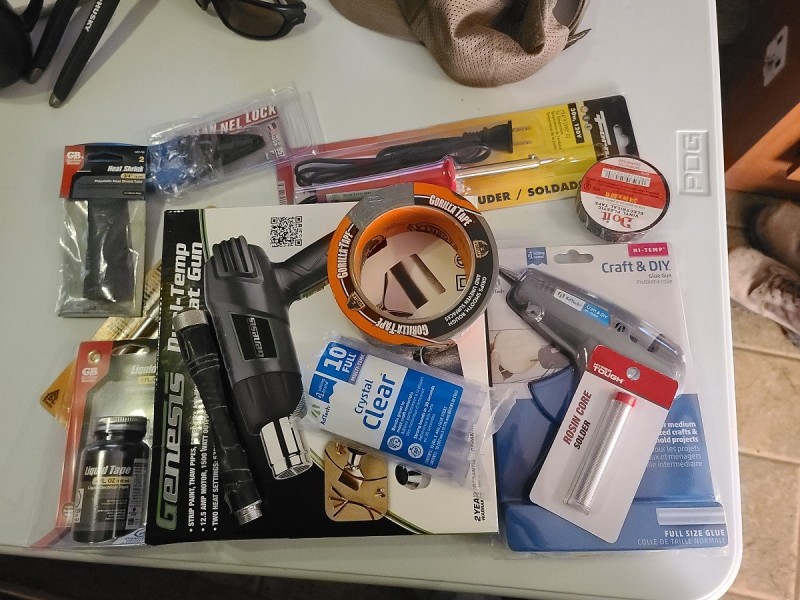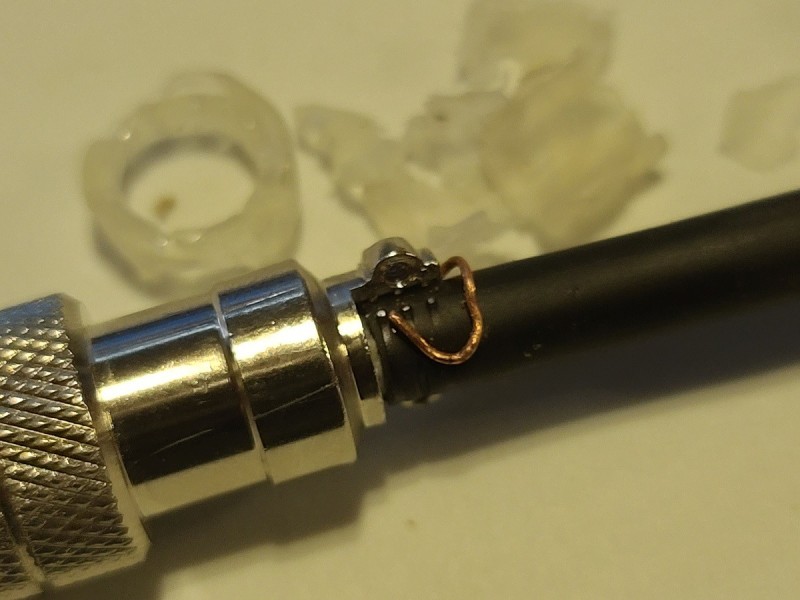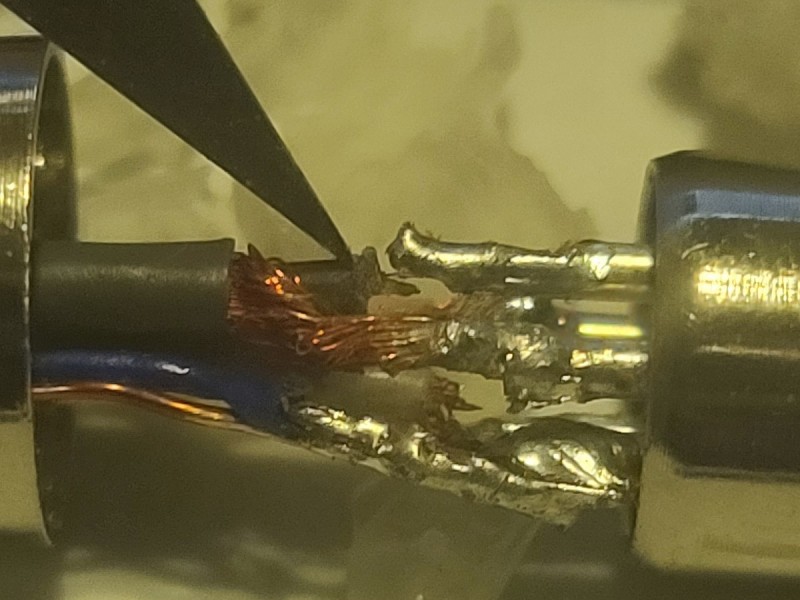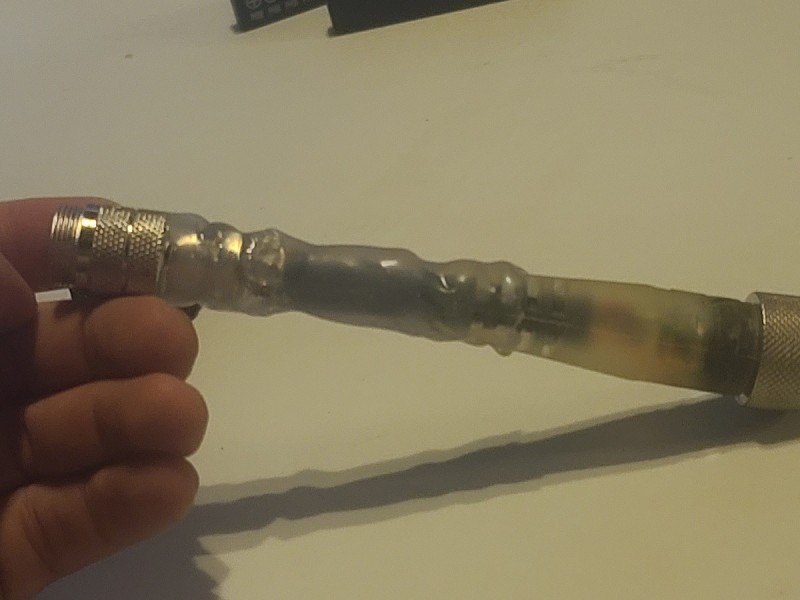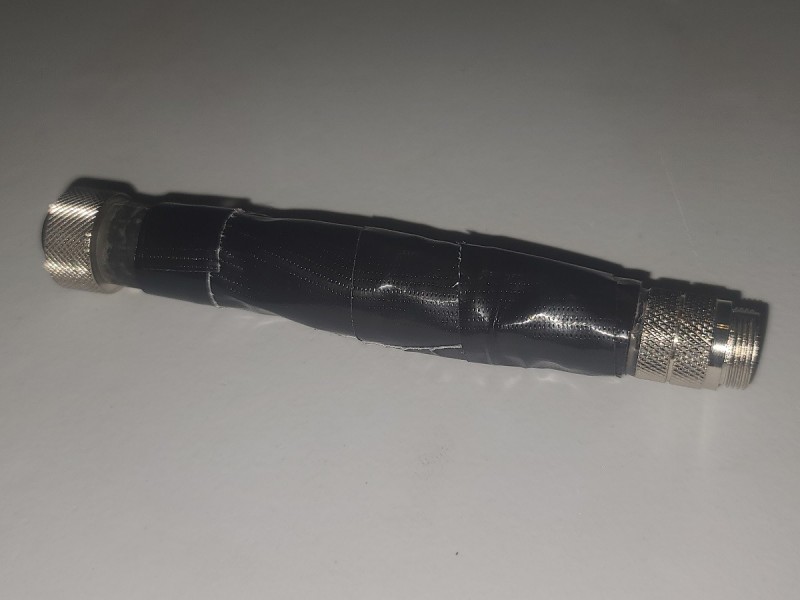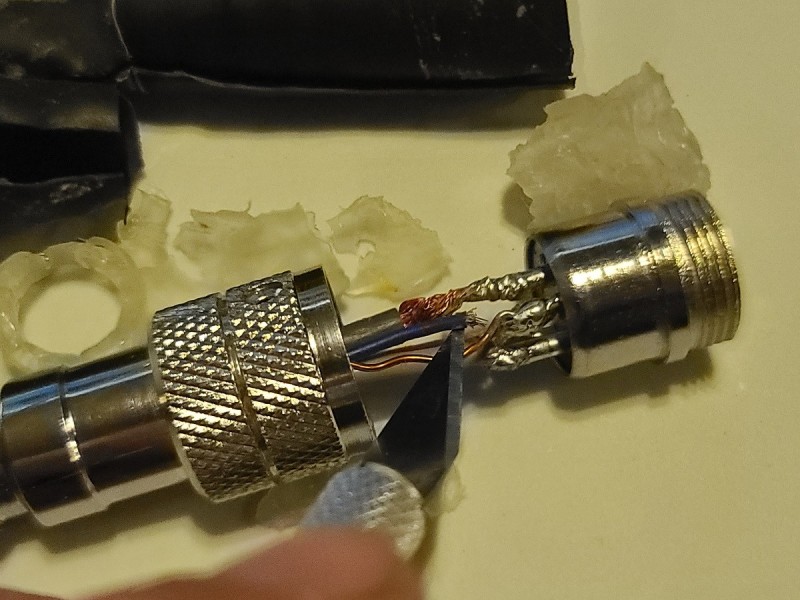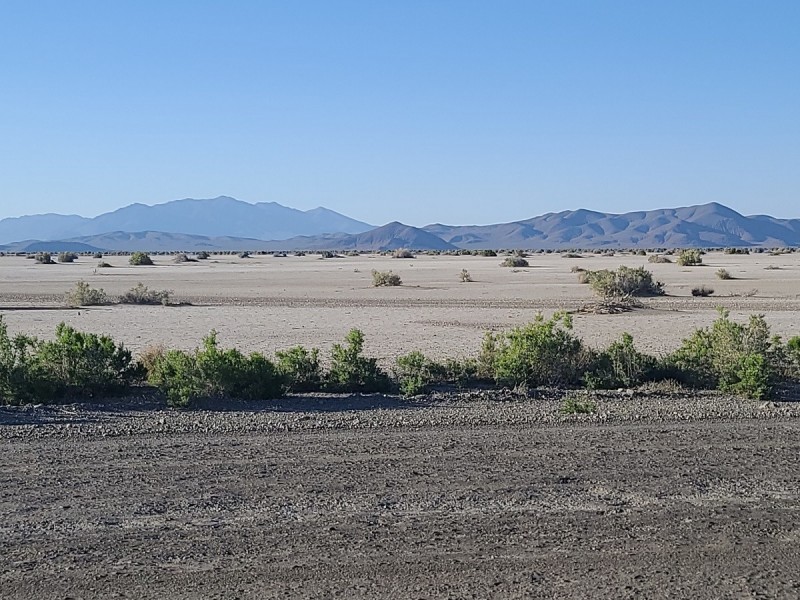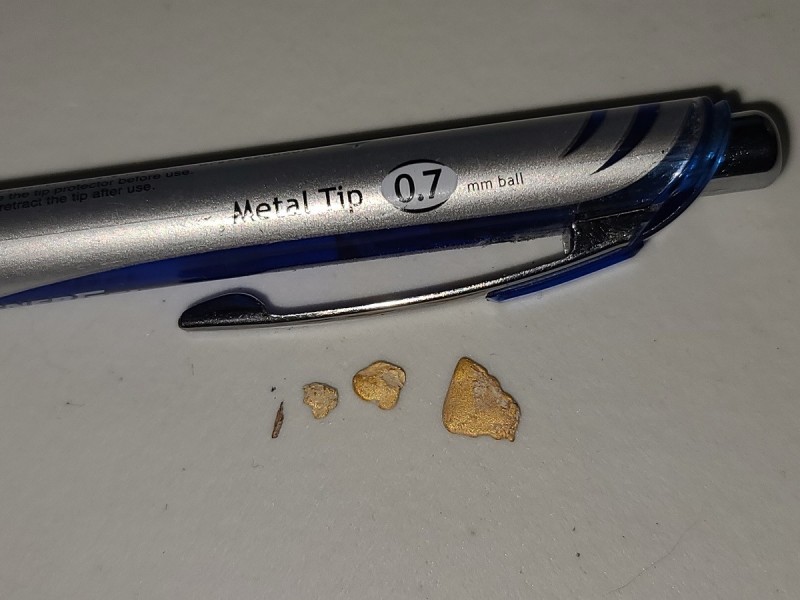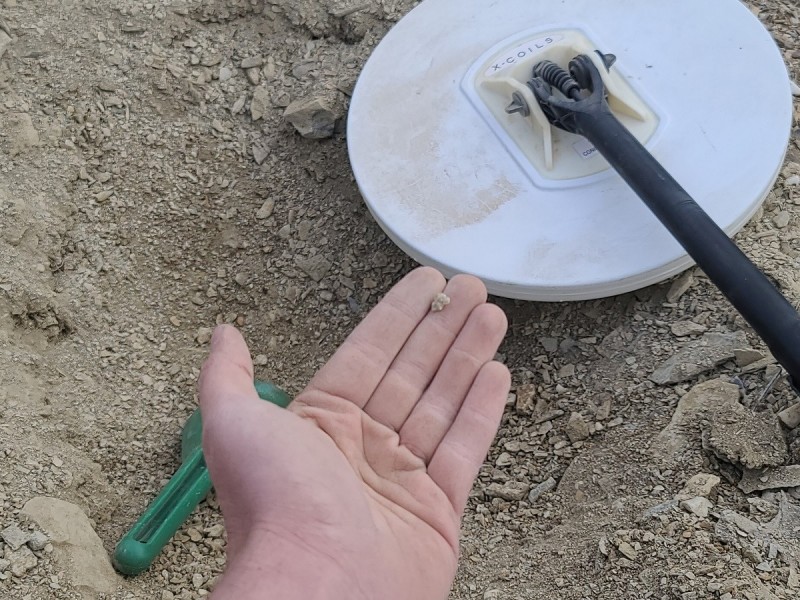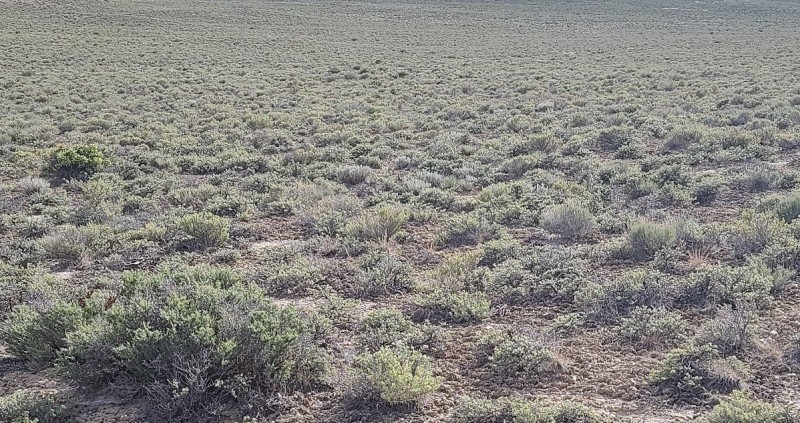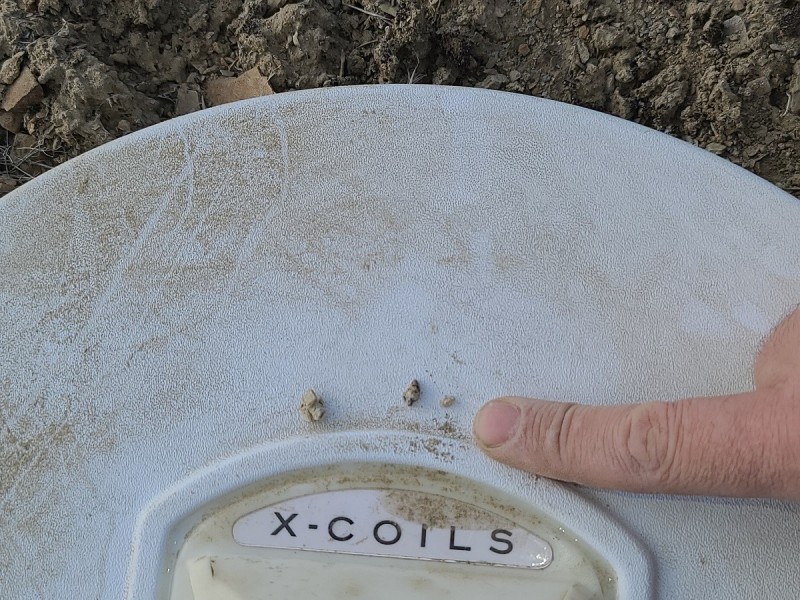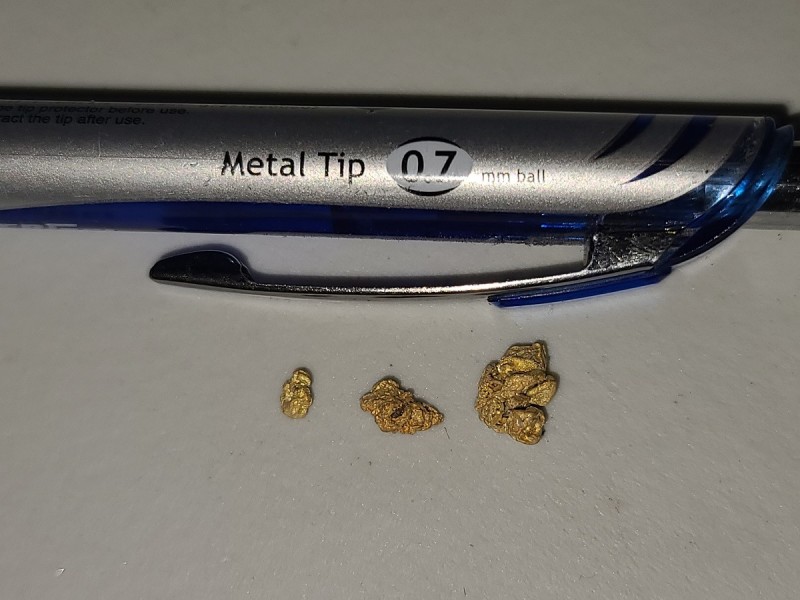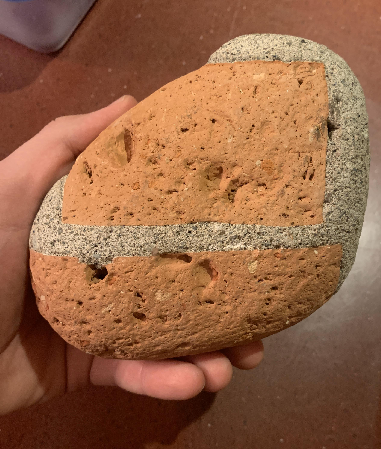-
Posts
2,465 -
Joined
-
Last visited
Content Type
Forums
Detector Prospector Home
Detector Database
Downloads
Everything posted by jasong
-

Making The Move From GPZ 7000 To GPX 6000
jasong replied to Gerry in Idaho's topic in Detector Prospector Forum
The thing that really keeps the 7000 relevant IMO, and very ironically, is the existence of X Coils, which Minelab will not support... And since ML won't make a smaller coil themselves, this made me start to lean away from the software update idea bringing GeoSense to ZVT (something I've been saying for months, why is Norvic getting the credit? lol), and tend to agree more with Steve that Minelab does not seem interested in throwing more money at the 7000 for that same reason, among others. Which makes me want to give up on it too. But hey, there are still lots of people swinging 5000's so there is still clearly demand for older tech and the 7000 is better than the 5000 in every way IMO (except weight) if you run X Coils, so I'm sure there will be demand for older 7000's too if the price is right used. Where that leaves demand through their current product line, I don't know. But there are options to meet or exceed the performance of the 6000 in some areas with the 7000 still with coils so those who own one now have a cheaper way to meet or beat 6000 performance already (just not weight or speed). If ML wants to keep 7000 really relevant, about the best thing they could possibly do right now is sell a factory made patch lead. Even with a software update to the 7000, I don't see it meeting the performance of the 6000 in salt with the stock coil. And I don't see ML releasing a new coil for it 6 years later. So, I'm guessing there is a new ZVT machine that will come out in a year or two, but that's 100% a guess. And at that point we will all think that's the only machine we need to own. And so on and so forth. 😅 -
Either Minelab can make more 6000 coils or X Coils will do it, I have no doubt. A smaller sniper coil, and a larger coil that goes deeper than the 17" elliptical while being lightweight will find a ready market on the 6000. And I'll be among the first to do whatever it takes to run them, if Minelab has no similar coil options. These 2 coils would make the 7000 largely just a heavy redundancy in my eyes at that point. The outright power of ZVT might keep the 7000 at top, but only because of larger X Coils. And I'm still not convinced that the 6000 can't match the depth of the 7000 with a big, well designed coil. If one doesn't consider X Coils on the Z, then the stock 7000 is no longer king IMO, the stock 6000 is the new king in the USA and our conditions here.
-
I couldn't get one delivered to the RV park fast enough before I leave, so I went to Big R and got a generic equivalent. This freakin' shirt saved my trip man, went out all day in it and the sun couldn't touch me. Thank you for posting that link. I've prospected 120 degree days in AZ, and worked -25 degree w/40mph winds on the rig floor in Wyoming, been in some weather. But the last few years any amount of sun hitting me when the temp is over 75 or so just destroys me. This shirt rules, it's hat + sun protection combined. And way cooler than a normal long sleeve so no overheating.
-
Nice Wes, a shirt like that is exactly what I have been looking for and had no clue what to call it. I had to stop detecting after 30 mins today because my arms couldn't take any more sun and the heat above 75 or 80 degrees just destroys me now unless it's fully cloudy out.
-

Making The Move From GPZ 7000 To GPX 6000
jasong replied to Gerry in Idaho's topic in Detector Prospector Forum
This is the point I was trying to make too. Weight, software speed, sharpness of targets, ability to move fast through salt, Auto+ mode = great prospecting rig. When I say a "prospecting machine", I think people generally interpret it to mean general detecting, but to me prospecting is 100% exploration. It's something I can toss on my ATV and hop off when needed, turn on, investigate quickly, and then quickly toss it back on the ATV and be off exploring with no delays. I quit taking my GPZ with me years ago and put my VLF on my ATV instead, and more recently just go without any detector at all on prospecting journeys. The first thing I thought after spending 15 minutes swinging the 6000 was I'd have a big gun for prospecting again finally. The only thing I would add is the option for an 8" or 6x10" mono sniper coil and a 17-18" mono round, and then there is no need for a GPZ at all. A subtlety which I'm sure Minelab sales dept has considered. 🙂 -
Hmm, maybe I applied to much heat at first too? I wonder if those are aluminum wires or something. They seem very fragile. Thankfully this cheapo Big R soldering gun is pretty low temp, I used my good Weller the first time around and it will get hotter.
-
That's hilarious, if that's one of your base camps then that must be why you recognized my photo quickly. 😄 Totally unintentional, it was just a random spot away from any place I was detecting to take a photo to show the salt flats and mislead the ticks and leeches into hunting down when they try to find me. 😆 I'm not sure if it's exactly in that picture, but it's looking towards the general direction.
-
With every reward seems to come a risk. I made a patch lead 2 years ago now, and my first one had an issue where this tiny, very thin RX wire literally broke on day 1 of me testing it. The solder joint was fine, the wire itself broke when I extended the shaft out all the way. Afterwards, Phrunt posted some ideas about using adhesive backed shrink wrap, wrapping in tape, etc. I did those, and I didn't have an issue for 2 years. I've changed changed coils probably as much as anyone out there except the X Coil manufacturers themselves, as I have a nice stack and I am not afraid to use them, sometimes I'll change 3 to 5 times a day and when testing or showing people coils/comparing I can change easily 10 times a day. Each time extending the shaft back out to maximum. This puts stress on the patch lead. Unfortunately a few days ago I did have an issue where right after changing a coil the patch lead stopped working. As a result I didn't have a chance to test the concentric against the 6000 on my own machine, so we did a brief test on Condor's machine and then I hauled ass to Winnemucca to try to round up supplies to repair this patch lead before the small amount of stores here with such supplies closed for the day. Here's my stack. $80 I didn't want to spend, and a half day of detecting lost. This doesn't include the trip I had to make back to O'Reillys to buy an impossibly tiny screwdriver, which thankfully they had in stock and I made it just minutes before they closed. Luckily I had a multimeter with me as I just installed 1200 watts of solar on the roof of this RV before leaving. I did some quick testing and determed it was the blue shielding wire which had come undone, which was odd since I assumed it must be the tiny RX wire again, or maybe the enameled RX shields. So chop chop, I cut off the tape and heat shrink, I had added extra hot glue to the outside of the adapter for added strength and pull resistance so I got that cut off to, and then pulled the clamp off. There was no sliding/failure of the strain relief clamp visible, and I could see where the clamp teeth had bitten (and stayed) on the cable sheathing. So, no failure there. (The shield wire was bent by me poking and prodding, it wasn't originally where it was in this photo). The blue shields wire was in fact broken, as my multimeter had told me. And again, the wires themselves broke, the solder joint was fine and still had wires sticking out of it. Unfortunately, the break meant there was not enough wire left to attach to the connector post, so I scraped the enamel from the magnet wire with the Exacto knife and soldered straight to it. But somewhere along the way I must have bent the adapter slightly, and it was just enough movement to snap the ultra-tiny grey RX wire in half!! Thankfully I noticed before rebuilding this. Yes, my soldering is getting ugly, but I struggled with those enameled red wires at first, and I've now resoldered the blue wire once, and the grey wire twice, with limited tools sometimes and a crappy Big R ranch store soldering iron and tip. Unfortunately there was not enough wire left to peel back insulation and attach, so I had to spend some time creating a solder bridge to the RX, which I already did once before on day one, so it was quite a long bridge now and took some time to get right. This solder is getting quite messy with 2 repairs now, and the wires are getting very short, with the RX breaking twice. I might have 1 repair worth of wire left before I have to buy another coil to cut the adapter off. So, I repaired it all. I tested, restested, and then triple and quadruple tested for shorts and opens with my multimeter. And then I hot glued everything inside and reassembled the connector. Then I tested a 5th time after it was reassembled just to make quintuple sure of no shorts. There is not a single piece of adhesive backed shrink tubing in Winnemucca or anywhere even close to me. So, I 3-d printed a sheath of hot glue over the entire adapter by hand with the glue gun. It's ugly but hopefully it'll hold better than the shrink tubing. I'm pretty sure these wires are breaking by either pulling strain, or from slight bending of the adapter. I am sure I bent the adapter slightly when repairing the blue shields and then promptly broke the gray RX during repair. So, I put 7 layers of Gorilla tape over this whole mess to try to stiffen the adapter up. I cannot put any more tape on without it starting to bind up in the shaft. So, this is the best I can do with what I have. It's working good and I'm back running again. But this was a reminder to me that even a properly built adapter can eventually fail with enough bending/pulling strain/constant changing of coils. Just since I've been in NV for 3 days I bet I've changed coils 15 times. Luckily I can repair things myself and Winnemucca had enough stuff between Big R, Walmart, O'Reillys, and True Value to fix this. But I was thinking if Mitchel or Condor were alone out here and had a break, they'd probably be driving back home and ending the trip to get it fixed. So, it's something to consider. If I flew to Australia, or treked into the depths of Papua New Guinea, is this what I would take with me? Probably not, too much to lose if something fails. I'm dangerously low on bandwidth on my phone, and this RV park Wifi it too slow to even open up the default Google search page, so that internet is useless. So, barring any kind of exceptional finds here, I don't think I'll be posting any more photos this trip.
-
Can you mail a coil to Strick to get X-rayed? 😀 Thanks for the opportunity to swing it some more, looking forward to it. I am on a short trip and I have a laundry list of exploration to do to test some geo-theories I've spent the last few years thinking on. Plus I have a lot of shovel work to do on my land before I have to get back home to normal job. But definitely will take the opportunity to get some more time on the 6k.
-
I'd mention NF and Coiltek, but they are in danger of becoming irrelevant in my eyes since they only make 1 coil combined for any machine I actively use today, or plan to use in the future.
-
I think that looks like a great spot to prospect for table salt for dinner. 😀 Actually, I bet you could run that 8" out there to some degree. I definitely bet the DD on the 6000 could run there. I probably whirlwinded through a place or two you are familiar with. 😀 That is the question. With the added consideration of needing to make an adapter. $1kish for a coil, $6kish for a detector with 3 coils. The 6k/DD is better even still in salt w/DD, but the 8" is likely deeper and cheaper (relative to the 14" DD on the 6k) from my limited testing (TBD still). I feel the 6000 is tailor made for Nevada detecting. But this 8" is the cheapest way for a GPZ owner to get some good salt performance right away in Nevada. So like everything, there are multiple considerations. If I was a person who lived here, and primarily detected Nevada then 6000 all the way. However, for the Arizona guys who come up here 2 weeks a year, I feel there is a real case to be made for keeping the 7000 and getting an 8" or 10" X Coil for up here, and a 15 or 17" concentric or spiral coil for AZ. Certainly though if a person does not currently own a 7000, then a 6000 would be the way to go. Same goes for anyone who does not have the need or concern to eek out a few extra inches of depth here and there. It seems to cover all bases really well. And it does it while feeling crazy lightweight on the arm. If Minelab lets X Coils make aftermarket coils for the 6000, then I'm selling my 7000 and one detector will be all I need.
-
Thanks for doing the work and time finding and testing the undug targets. If you want to borrow this 8" sometime let me know, I bet there's more nugs hiding in there somewhere where that salt gets excessively gnarly if you want to try someday. I'm going to go back there sometime with it in the worst salty part just to see how it does.
-
I have been itching to try the 10" X Coil out in Nevada salt for almost 2 years now, but life has always prevented me from making it to Nevada until now. And luckily, I also now have an 8" to try as well, plus a 15" and 17" concentric. Welcome to salt country! Sodium, even lithium salts here, all kinds. Salt everywhere, just ask Elon Musk! The 8" kills salt. I can't be more plain than that, it does great in places the stock coil is utterly unworkable. And it kills salt while retaining a good bit of sensitivity and depth too. The 10" definitely cuts salt down too, but the 8" takes it down another level again. Patches I had laboriously, slowly struggled to detect with the stock coil in bone dry dirt in July were almost silent with this 8", even though the soil was slightly damp past 2 or 3 inches in many places. That said, what I'm discovering is something Steve has mentioned in the past - the gold out here in a lot of cases is simply just not very deep. This is largely due to soil deflation, or what is sometimes called lag deposits. It just means that the light dirt blows away or otherwise erodes away, leaving behind the heavies fairly close to the surface. You know how when you drywash you can lightly blow the blonde sands out from behind the riffles and expose gold and other heavies? Similar thing, except over and over and over for eons. Anyways, my point is this: even though this 8" is an absolute pleasure to run in places that caused me a lot of frustration from salt response in the past, I managed to get most of the gold with the stock coil years back. I am finding a few dinks in each patch now, and it's because the gold just isn't there anymore. But this 8" is definitely the cheapest way to get 6000-like performance in salt for current GPZ owners, in my opinion. Actually, having run both machines, I believe this 8" may actually be more sensitive than the 11" mono on the 6000, but that just a guess since I didn't get a chance to compare them before the patch lead broke. The response on this coil is crisp and sharp. It goes from 0 to 60 on targets, often skipping all the steps in between, and it's a perfect compliment for running settings like I do with low threshold (around 13) and low smoothing. Here's 3 I got today at an old dink patch. The big flat one was 9" under a basketball size rock, which means the coil heard it from the edge. Which to me was impressive as hell at that depth. The tiny bit of iron was at 1" and a great target. It's literally verging on pen ball size, and that I'm slamming it with a GPZ is just kinda impressive to me. The 3 nuggets might weigh 0.3 grams combined. I had no illusion the concentrics would work any kind of magic in the salt, but this is simply the first time I've been able to get into the field to try them since they were sent to me, so I'm making the best of it. That said, I've run them enough now to say that I do feel they do slightly better in salt than the stock coil. I don't know if it has to do with the smaller TX or what. The improvement is slight though. What I can say is these concentrics are definitely a lot deeper than the stock coil. I pulled a 1 grammer up from what is easily my most gridded spot in NNV, and I know it had zero diggable or even questionable signals left in it. The nicest, most museum quality piece of gold I've ever found came from about 6 feet away so I had hopes, but this one turned out to be average. This crystalline gold is stealth gold, it's very hard to detect. It was a very obvious signal on the 15" concentric though. Unfortunately, the concentric doesn't only struggle in salt but it also struggles in bushy areas since the sensitive part of the coil is well inside the rim of the coil. So if you have areas that look like this: Then this is not the proper place for a concentric, even if you do a bit of weedwacking with the coil. So, I switched to the 8". However, what I wanted to mention is that the concentrics actually are sensitive enough on the edges to pinpoint with on the coil edge. It's not easy, and you really need to be close to the target, but it is doable, which surprised me. I wandered around the brush haphazardly and more or less randomly for a few more hours and got two more little crystalline pieces. Here they are all cleaned up, including the bigger piece I got with the concentric. A drastic difference between the flatter type gold, and you can see why it's harder to detect. Before cleaning: After cleaning: In summary: 8" is a great coil for NNV salt. And the concentric is definitely deep seeking, as AraratGold had posted in the past, I very much agree. But I'm unsure if the restricted sensitivity towards the outer edge which limits the coil's use in rocks and heavy bush cover will mean I end up going back to my 17" spiral, or if the depth gain makes these concentrics worth running outside of wide open fields. Since I'm getting a 6000 I probably won't be using the 8" as much, but the whole reason I'm keeping my 7000 is because I still see a use for these bigger X Coils and I believe these concentrics are going to do great next winter in AZ for me if I get them in the right terrain, and I definitely am not ready to lose the ability to run the 17" round spiral yet either, which I also didn't get to test against the 6000, but I definitely feel is outperforming the 17" elliptical on the 6000 at depth. But that's a 100% guess right now, and something I can test later. One thing to add on from my Arizona 8" post: this coil ran dead stable with zero knock sensitivity here in Nevada. There is something either with the ground or the vegetation causing this 8" to have knock sensitivity down there in Arizona, but not here in Nevada. It happened daily in AZ, it wasn't a mirage. It felt like the machine was trying hard to stay balanced, then when I'd knock it against a rock or just slightly rub against a branch it'd go crazy, then back to normal. I mean 80 or 90 times a day, not my imagination. I'd have to go out of my way detecting not to touch anything. But here in Nevada, not once did it happen with either my pre-repair or post-repair patch lead, and I could knock the coil against anything, no problem. So whatever is happening there in AZ has to be related to either the ground or vegetation. Most of the knock sensitivity was against vegetation, not rocks. It felt like the machine would go out of balance a bit when hitting the vegetation, but that doesn't make sense, and I'm really not sure what the deal was. Part II: the adapter failure next.
-

GPX 6000 - Tips, Tricks, Technical Questions
jasong replied to Northeast's topic in Detector Prospector Forum
I just had a chance to spend some time on the 6000 in Northern Nevada, ran all 3 coils (though I really only "detected" with the 11"), I got a feel and a ear for how they all work. I got my first 6k nugget in 5 or 10 minutes, maybe luck, maybe not. Also got some good time in on the 8&10" DODs and 15" concentric X coils in harsh NNV salt, also scored nuggets. And you can probably guess I did some basic comparisons between the two machines, which weren't nearly as detailed as I hoped for reasons I will explain when I have more time. I have a lot to say, probably take 2 new threads to keep different subjects separate. I don't have the time to write them in the detail I'd prefer right now. So in extremely brief summary: Overall - the 6k gets a thumbs up from me, I'm going to buy one for basically 3 reasons that I suspected (and have been written about by Steve and JP), but became more clear to me today after being able to hold and operate the machine in real conditions, something I would encourage anyone with a chance to do. I'll go more into detail when I can later, unless someone else beats me to it. 😄 Meanwhile, I have some electronic surgery to do on my Z to make sure I can make it into the field tomorrow, so writing more will have to wait until I finish this stuff (which I also will explain later). (sorry Northeast, I mean to post this in the 6k US prospectors thread, I was in a hurry and not paying attention). -
Pretty much what Mitchell and Doc said. I am a prospector, not a detectorist. I just happen to use a detector quite a lot to prospect with. What I mainly prospect for is geologic clues - structure, mineralization, formations, alteration, etc. I use topography, erosion, and gravity to narrow the search for heavy minerals down. Gold isn't a mystery, it came from somewhere and got to where it's at for a reason, no matter how convoluted and complex. Very rarely do I wander wide open places swinging a detector, with little structure or other geologic clues available to follow. That's just raw detecting and not prospecting, and I don't have a whole lot of interest in it. So, the only time I really grid is when I'm working a small, defined patch area. Or, when I find scattered nuggets I will walk lines on my phone GPS across what I presume is the new patch, and map each nugget to look for distribution patterns/direction. What I do absolutely grid is Google Earth. Entirely and completely in places I'm intersted in. I set a rectangle and then zoom in and scan each and every square foot of land on the aerials before visiting in person, and then set a new rectangle when I'm done with that one, and so on. Every night basically, instead of watching TV I do this until I've looked at every square inch zoomed in. I mark every single faint 2-track, footpath, prospect, abandoned building, foundation, dozing, or anything else that indicates human activity in the area, and I visit it. With all the geologic and archaeologic points of interest downloaded into my phone, I simply visit them one by one on foot. And I very rarely miss anything major in areas I'm seriously prospecting. Just brute force covering every possible point of interest on the ground and thousands and thousands of hours on Google Earth aerial gridding every square foot. Often I don't even take my detector, I just cruise around on my ATV looking for things that tell me a place is worth coming back to detect or sample pan. I do that because I'm limited on time and I need to concentrate on the best possible places when I'm exploring for new ground. For any new guy without old timers to show them the old known patches - this is the way. Brute force prospecting, with a focus on efficiency and not sweating getting 100% of everything, everywhere.
-
Rebury tests in mild ground are not very different than undisturbed tests in my experience. I've done a ton of them on a lot of different detectors and never seen a real noticable difference in a place like Gold Basin or Quartzsite. It's when the ground gets bad and you get pockets of iron oxides or salts that get redistributed differently during rebury that the effects become real noticeable from my experience. But there is a ton of mild ground in the US, so I see value in those tests still, because they represent a bulk of my (and many other people's) detecting. The lack of settings detail/definition on 1 or all of the machines makes a lot of these recent comparison vids involving the 6000 not very valuable to me personally since we have no idea if we are comparing apples to apples or oranges. That and everything running in Difficult mostly, while not showing if the ground is hot enough to even require it. I think there is good value in rebury tests and even air tests - to find absolute maximums. And then additionally, tests on undisturbed nuggets in hot or salty ground. Two different tests, two different valuable pieces of data.
- 13 replies
-
- minelab gpx
- minelab gpz 7000
-
(and 1 more)
Tagged with:
-

Gold Detecting In The Philippines
jasong replied to Goldseeker5000's topic in Detector Prospector Forum
2nd'ed. It's a place I am also curious about prospecting. The USGS actually has some decent basic info on Philippine geology along with some mines and mineral resource data. As a starting point anyways. What I'm finding as I'm making an effort to meet people around the world in places that seem interesting to travel to or prospect is that even if you get the laws sorted out, it's really difficult to actually go prospecting in any way remotely resembling what we do here where you can wander and explore around freely. Especially in these smaller countries where there aren't vast amounts of empty, public land. -
There are various videos on Youtube, Facebook, etc. They usually aren't like Western videos though, they don't seem to really show much detecting. I doubt many villagers have time or resources to be posting to forums or creating videos. The Western US was incredibly dangerous back in the 1800's when the prospectors came out. I find the potential adventure in another country to be a somewhat tempting prospect myself. I have little family, nothing to lose really, why not. Problem is I can't find any place where legally you are allowed to go prospect. I checked Papua New Guinea, which I think has an amazing potential for nuggety gold based on the geology I've read. It's incredibly dangerous too. But sadly foreigners aren't really allowed to prospect and every square inch is privately owned. I also made some friends in China with my various jade ventures, and they tell me there is 0% chance I can ever go there and prospect or keep the gold (or jade). Which is ironic since we allow any Chinese or other foreign company to simply form a corporation here in any state and we treat it like a person with equal rights as a natural born citizen when it comes to mining laws. I'm curious if anyone knows any countries that an American can go and prospect that are still "on the frontier" like in Africa, keep the gold, maybe even stake a claim or start a mine? Or do we only give our minerals away to any country that wants them while getting no reciprocity in return from anyone?
-

Mystery Rock / Mineral Found While Detecting
jasong replied to GB_Amateur's topic in Rocks, Minerals, Gems & Geology
I missed this post, it just popped up on the sidebar right now though and I saw it. Metals when heated can alter hardness, even if not alloyed. Some by 2x or more, so Moh's is not a definitive test for slags and whatnot. You already solved it, but I agree, your tests indicate aluminum slag. -

GPZ Nuggetfinder 12” Vs GPX 6000 11”
jasong replied to afreakofnature's topic in Detector Prospector Forum
You are seeing the same videos and reading the same reports as me Strick. I don't own a 6000, I wasn't a tester on it either, just watching the same vids as everyone else. What I've seen has lacked sufficient target/setting/ground info and variety to make a more specific statement. Especially since the gold I detect for tends to be much more spongy or crystalline, and the ground I work tends to be much more mild or salty than what I'm seeing in the Aussie vids. I also run way hotter settings than most Aussies seem to post, even in hot ground. What I have seen enough to conclude though, is that if I didn't already own a 7k with an array of coils, I would be buying that 6k right now. I still might buy one too. -
Purchased a 12", was sent the rest for free later on. My reports on them can all be found on this site. Have 2 concentrics that were sent to me as I was heading home from winter prospecting so I haven't had a chance to test them yet. From basically day 1 I've explained what I paid for and what was sent to me for free. In fact, I was the first person to ask the same from others, including other products too. I've gone out of my way to take as neutral of an approach as I humanly can and report on both the things I like and the things that need improvement. And while those reports can be found in prior posts, it's also no secret that now I still haven't put the stock coil back on since getting my X Coils, nor do I ever plan to.
-
Metroite?
-
Scientifically what you have found is called "urbanite". It's a rare instance where geology and archaelogy blur together. This may or may not be sarcasm.
-

GPZ Nuggetfinder 12” Vs GPX 6000 11”
jasong replied to afreakofnature's topic in Detector Prospector Forum
A buddy of mine bought a 6000, we might do some exploration this winter in new parts of AZ so I should get a good idea of how it performs compared to my various X Coils, of which I own a 12" (and many others, including concentrics) and I assume this X12 is similar if not slightly better than the Z Search 12. So, if no one answers before then, wait about 8 months and I will. From what I've seen of the 6000 from reviews, that's what I'd be using in the Black Hills personally because there isn't a whole lot of competition up there where every iota of performance gain counts (compared to AZ anyways), and there are a lot of picker to sub gram nuggets. The 6000 is clearly equaling or outperforming the 7000 on the sub-gram stuff from what I'm seeing, at any depth. That said, I have to believe there is something new in the ZVT realm coming out eventually. The "GeoSense-PI" thing sure seems to indicate that "GeoSense-ZVT" (ZeoSense?) is on the horizon to me, combined with the patents I've read and the investor presentation saying 5 new products are in development right now. And I love my 17" round and 8" X Coils quite a lot, if I could use them with a better ZVT machine then heck yeah, sign me up and I'll buy that instead of the 6000. If not then I'm allllllllllmost tempted to sell my Z and get a 6000 based on what I'm seeing so far, but not quite yet until I see what the future holds. -
Hey Norm, sorry to hear the diagnosis. It's hard to do at first but keep your spirits high and thoughts positive, and don't give in because you probably still have a lot of life ahead of you. I have to believe that deciding to take control of our own fate by believing we will persist for as long as we can has real effect. I have somewhat similar issues as occurs in ALS so I can kinda relate, and my clock is ticking too, with sclerosis in my brain and c-spine that left me partially paralyzed and without muscle control in other areas, and blind in one eye, thankfully much of which I recovered. Some might be luck, but I think some is just refusing to give up until we are ready and not accepting less. Life is a fatal diagnosis for everyone afterall from the day were are all born, and we all fight to stay alive daily just against the elements, so getting another diagnosis later on can be looked at as nothing but another hurdle along the way that might take a little more fighting. Stay positive, believe that you have some power over your body to keep going, and I think it will carry you forward longer than doctors think. Keep working your brain. I like to play chess daily to keep my mind sharp when I feel some decline or end up with new brain lesions, doing prospecting and geology research also helps. If you have anything like that that takes some brain work, keep it up, keep active where you can. I feel like it forms new pathways in the brain when old ones get damaged and maybe prolongs decline. Good luck man.


